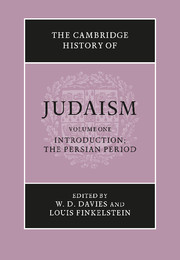2 - Numismatics
from INTRODUCTION
Published online by Cambridge University Press: 28 March 2008
Summary
Since the eighteenth century the careful, scientific study of ancient Palestinian coinage struck by both Jewish and non-Jewish authorities has been recognized as an important adjunct to the study of classical Jewish history. The careful recording of coins, the exact cataloguing of the numismatic evidence in archeological excavations (neglected until well into this century), the systematic and detailed description of coin hoards and the methodology relevant to their study, the comparison of dies and the sequence of coins, have all shed new light on classical Jewish history. In addition, the application of related studies in epigraphy, religion, art and architecture, chronology, prosopography, metallurgy and economics have all contributed to our understanding of ancient coinage and, conversely, have increased the light that the study of numismatics can shed on these other disciplines as well as on the study of history in general.
THE PERSIAN PERIOD
Coinage was first introduced into the economic life of Palestine during the sixth and fifth centuries b.c.e. as part of the extended growth of coinage in the Mediterranean world. The two oldest coins which have so far been found in Palestine were minted in Greece in the sixth century, one from Thasos, found at Shechem, and the second from Athens, found in Jerusalem. But as isolated finds they do not allow any definite conclusions. Later on, in the fifth and mainly in the fourth centuries, Phoenician coins as well as local coins came into circulation, though Greek coins continued to be in use.
- Type
- Chapter
- Information
- The Cambridge History of Judaism , pp. 25 - 59Publisher: Cambridge University PressPrint publication year: 1984
References
- 2
- Cited by



